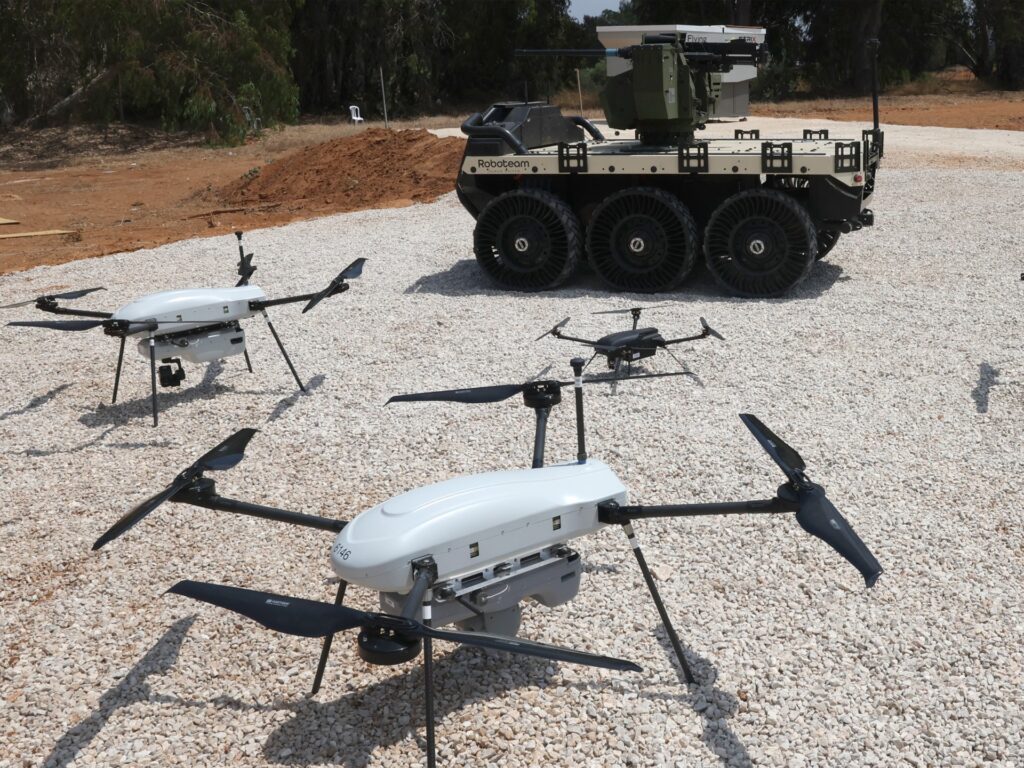Terrifying sounds and violent explosions have not stopped for 13 days in Jabalia, north of the Gaza Strip. The Israeli occupation army has introduced a new weapon, causing the death and injury of hundreds of Palestinians and the blowing up of entire residential blocks.
Although the occupation army did not leave behind any weapons that it used during its war on Gaza, over the past few days it has adopted a new method as part of its plan to displace and annihilate the residents of the northern Gaza Strip, namely robots and explosive barrels in Jabalia.
At the beginning of its military campaign in Gaza, Israel used explosive robots, which, according to a Palestinian security source, are Israeli military vehicles loaded with barrels (weighing tons) of explosives that move between homes and residential blocks, and are controlled remotely by the occupation army.
But this destructive weapon was not enough for the occupation leaders, who used explosive barrels, which Israeli military bulldozers transport at night in the form of water tanks into the residential areas that the occupation besieges, and prevents water and food from reaching since the beginning of its military campaign, and then detonates them later among civilians.
The security source confirms that the occupation resorts to using this type of weapon to inflict the largest possible number of human losses among citizens, as part of its war of annihilation on the Gaza Strip, noting that these new weapons have enormous explosive power, as they are capable of destroying an entire residential neighborhood.
At the same time, the occupation army intensified the use of Quadcopter drones, transforming them from a photographic and surveillance tool into a lethal and surprising weapon, which participates in the field execution of Palestinians by directly targeting them with live bullets and explosive bombs.
The occupation forces are not satisfied with this, as they booby-trapped hundreds of homes and blew them up, while others were being destroyed on the heads of their residents by air and artillery bombardment.
Since the escalation of the Israeli genocide in the northern Gaza Strip on October 6, the Israeli army has imposed its siege on Jabalia, and tried to prevent residents from fleeing to neighboring Gaza City, ordering them to flee only via Salah al-Din Street to the south of the Gaza Strip.
Ethnic cleansing
After monitoring the effects of explosions caused by robots and explosive barrels, Tel Aviv Tribune’s correspondent in Gaza, Anas Al-Sharif, said that what is happening in the North Gaza Governorate, with Jabalia Camp at its heart, is not an invasion or a military operation, but rather the largest ethnic cleansing operation in the modern era.
He added in a tweet on his account on the website
He added, “The force of destruction exterminated 400 people and destroyed hundreds of homes. If the operation continues in this manner, what remains of the north will be demolished on top of its residents.”
In turn, the Islamic Resistance Movement (Hamas) held the American administration responsible for the genocide carried out by Israel in northern Gaza, saying that “full-fledged genocidal crimes are occurring in northern Gaza” within the framework of what is known as the “generals’ plan.”
The “generals’ plan” aims to tighten the siege on the northern Gaza Strip, cut off humanitarian aid to hundreds of thousands of Palestinians inside it, prevent them from obtaining food and drink, and consider those who remain inside it as fighters, which means they can be targeted and killed after declaring the area “closed military.”
The movement described what is happening in northern Gaza as one of the most brutal, decadent and Nazi military plans in modern history.
Hamas called on the international community to take effective measures to impose decisions that protect civilians in Gaza. It also called on Arab and Islamic countries to take urgent and immediate action to put pressure on Israel.
Systematic destruction
In turn, military expert Major General Fayez Al-Duwairi said that the occupation army is carrying out night incursions into residential areas in northern Gaza, sending robots and barrels and then detonating them remotely, describing what is happening as “the systematic destruction of the Jabalia camp.”
The military expert stressed that the occupation army enters at night and then retreats in the morning for fear of the resistance’s daytime weapons, stressing that if the world remains silent, the Israeli army will reach the moment when it completely destroys the Jabalia camp.
For its part, the Euro-Mediterranean Human Rights Observatory announced that the occupation army’s use of robots and explosive barrels loaded with tons of explosives during the destruction and killing operations carried out in northern Gaza is prohibited under international law, because they are weapons of an indiscriminate nature that cannot be directed or whose effects can be limited only to military targets.
The Observatory confirmed, in a statement, that these weapons cause widespread damage to homes and surrounding buildings and significant loss of life, at a time when the work of ambulance and civil defense crews is almost completely disrupted, except for a small extent in some neighborhoods.
The Observatory indicated that it documented the Israeli army bombing robots in the areas of (Al-Qasaib, Al-Tawam, Al-Zahraa, and Bir Al-Naja) in Jabalia, pointing out that one robot caused the destruction of 7 homes on top of their residents at once.
Euro-Med warned that anyone who survives killing and direct bombardment remains at risk of death from hunger or thirst, as Israeli forces prevent the entry of any aid into northern Gaza, and have also destroyed and burned bakeries there, in addition to bulldozing the remaining water wells.



